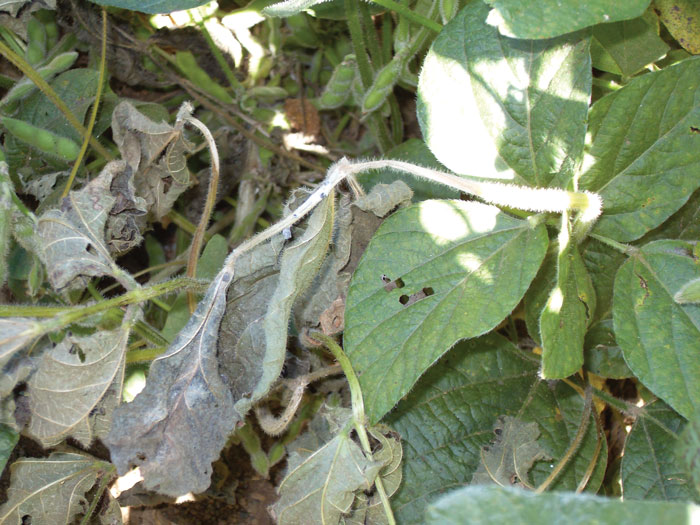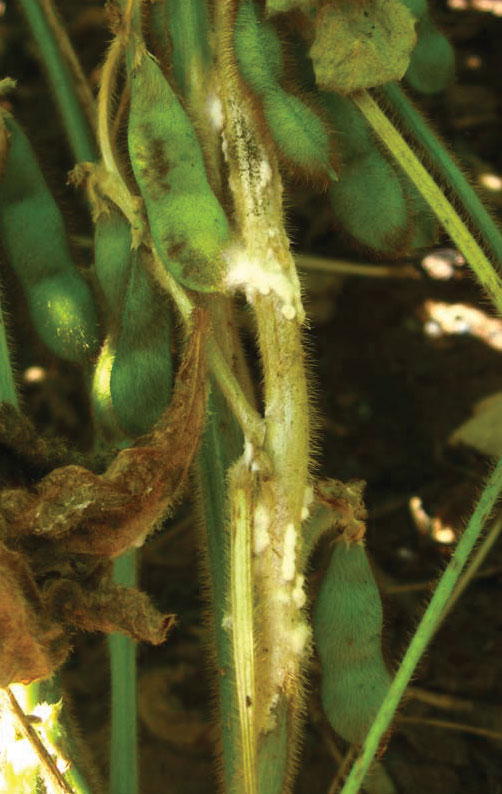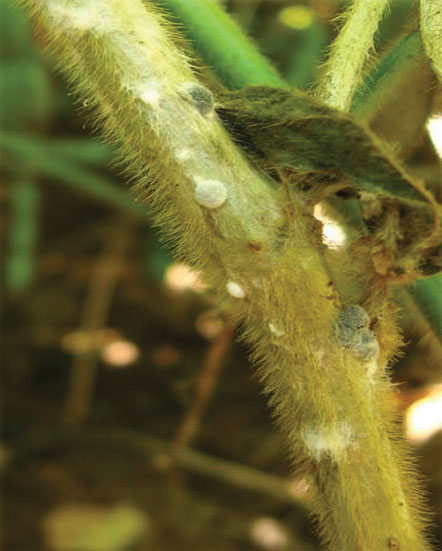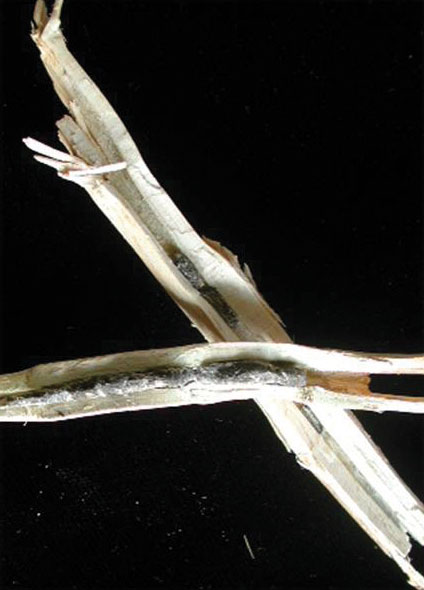
Free State
 Dr Adré Minnaar-Ontong, Faculty of Natural and Agricultural Sciences, University of the Free State
Dr Adré Minnaar-Ontong, Faculty of Natural and Agricultural Sciences, University of the Free StateSclerotinia sclerotiorum is a well-known soil-borne pathogen globally and is responsible for significant economic losses due to its wide geographic distribution and diverse plant host range. In 1979 the presence of this pathogen was first reported on soybeans in South Africa and despite epidemics recorded in the 1980s, the disease was sporadic and not of economic concern.
In recent years, however, the importance of Sclerotinia stem rot on soybeans has increased locally. This is due mainly to germplasm susceptibility and changes in agronomic practices. Loss of valuable agricultural land due to the long-term survival of this fungus in the soil also plays a crucial role as it has the ability to survive extreme environmental conditions to ensure survival and thus new infections in the following seasons. Crops affected by this cosmopolitan pathogen serve as significant sources of income for many countries worldwide and susceptibility of these crops to S. sclerotiorum is a major yield-limiting factor that also leads to reduction in grain quality and products.
Symptoms
The survival structures of S. sclerotiorum (sclerotia) that result from infected plants can remain in the soil for up to twelve years. When sclerotia germinate, the appearance of mushroom-like structures called apothecia on the soil surface is a clear sign of the presence of S. sclerotiorum. These structures can be spotted under the leaf canopy of plants where ascospores are released that subsequently infect the crops. In soybeans, S. sclerotiorum infections usually start in localised plants or spots in the field (Photo 1). Symptoms may be observed in the pods, stems, leaves and seed where water-soaked lesions are formed.

As the disease develops, white mycelia form and the lesions progress further until it circles the stem. Stems become wilted and take on a bleached appearance. As the plant weakens, stems become stringy, resulting in the lodging, wilting and death of plants (Photo 2). Sclerotia is produced from compact masses of melanised mycelia. Developing sclerotia will first appear whitish grey, turning to hard, black structures as they mature, serving as inoculum for the next season (Photo 3 and Photo 4).



Photos: C. Steyn
Lack of control
Significant research on S. sclerotiorum has been done worldwide as well as in South Africa on various aspects such as the infection and disease cycle, pathogen survival and disease control. However, a viable control option, especially a method that is economically effective and environmentally friendly, is still lacking. The development of cultivars with durable resistance remains the best long-term solution for disease control. However, in order to develop an effective breeding programme, proper knowledge of the pathogen morphology and genetic profile is crucial. Such a breeding programme requires information regarding pathogen resistance and virulence in target crops. Knowing the pathogen profile will assist with the selection of the proper disease resistance breeding approach.
Studying populations
Why is it important to study a pathogen population? In order to understand fungal populations, such as the S. sclerotiorum population in South Africa, genetic studies focussing on the processes – specifically on genetic change of the specific population over time and space – are important. This change can be due to natural processes, such as the lifecycle and/or the influence of agricultural systems, such as control systems. Therefore, in order to develop and establish a viable control method, it must be aimed at the entire pathogen population. This can only be achieved through proper knowledge of the pathogen population prevailing in an area of interest.
The South African population
A recent study at the University of the Free State (UFS) on the current South African S. sclerotiorum population indicated that the population is mostly clonal (genetically uniform) and forms part of a worldwide population. Differences in morphological characteristics were observed, which indicated that the pathogen moved into areas previously not subjected to S. sclerotiorum. However, crops such as soybeans and sunflowers expanded into areas previously mainly reserved for the planting of maize and this made the spread of S. sclerotiorum possible.
Even with the observable differences, the genetic study across South Africa over multiple crops and provinces indicates that the population is still young and developing with the occurrence of mutations. This might explain why this pathogen is now present in areas previously not affected by Sclerotinia stem rot, showing that the fungal population is constantly changing and adapting. These changes in the pathogen profile may also be explained by the warmer and drier climate that is not conducive to disease development in these areas, forcing the pathogen to adapt and therefore change. Susceptible germplasm, high plant densities creating a microclimate favourable for disease development and the recent higher rainfall were all factors influencing and favouring the high disease pressure currently experienced.
What is the value of all the information that was gathered and how does this contribute to solving this disease problem? From a plant breeder’s perspective, the uniform (clonal) population is good news as this means that a cultivar with disease resistance will be effective throughout the country and not restricted to a specific region. This potential cultivar will be resistant towards the entire S. sclerotiorum population prevailing in South Africa.
Breeding for resistance
Breeding for resistance remains the most economical and environmentally friendly long-term solution for Sclerotinia stem rot. In South Africa there are currently no cultivars resistant against this disease. In a resistance prebreeding programme initiated at the UFS, the South African soybean germplasm as well as cultivars from Argentina and the USA were screened for resistance against Sclerotinia stem rot. Some of these cultivars showed potential resistance with significant levels of tolerance. These cultivars will be incorporated into a prebreeding programme. The end goal of the UFS plant breeding division together with the private sector is the development of South African adapted cultivars with disease resistance and acceptable yield potential.
The fact that S. sclerotiorum is a host generalist and produces wind-blown ascospores as well as numerous sclerotia makes control of this pathogen strenuous. The development of resistant cultivars adapted to the South African climate, and agricultural practices will aid significantly in disease control. This will hopefully lead to an increase in production of oilseed crops and lessen the disease pressure currently experienced by local producers.





























